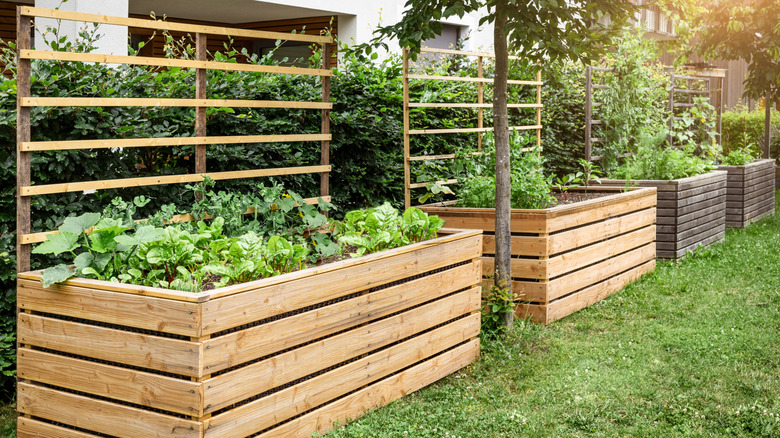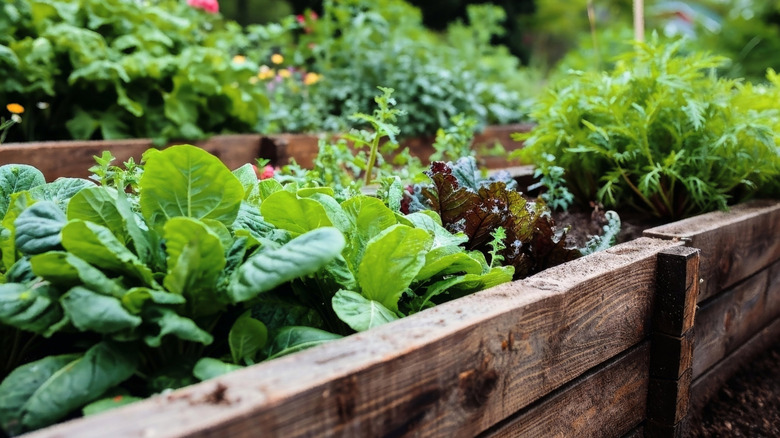Why You Shouldn't Skimp On The Soil When Filling A Raised Garden Bed
We know it's tempting to cut corners when you're starting a raised bed garden, especially considering how expensive bagged soil can be these days. Not to mention that every time you open your phone you're overwhelmed with videos promising effective budget hacks for raised beds and for the soil itself, using stacking sticks and even half-composted food scraps at the bottom of your bed. But unfortunately, plants aren't as easily fooled as we are; their roots know the difference between nutrient-rich soil and the garden equivalent of packing peanuts.
As it turns out, what you put at the bottom of your raised bed really does matter. Food scraps that haven't broken down will eventually start decomposing under the surface, a process that uses up the soil's nitrogen. Sounds fine, except that nitrogen is exactly what your plants need to grow — especially young seedlings — and now it's all being used up by another process. And as the organic matter breaks down, its volume decreases, pulling your raised bed down with it. So what started off as a full bed in the spring will have slumped down by the summer, which is a big problem when it drags root systems down with it.
Also, skip any hacks that tell you to layer in mulch or wood chips at the base. Like food scraps, they'll also break down slowly and use up all the nitrogen while they're at it. A better plan is to fill the whole bed with a mix of compost, topsoil, and something to keep it loose, like rice hulls or shredded leaves. This combo is a good way to keep roots happy by ensuring the soil drains well and won't compress into a brick by the end of the season.
Remember soil isn't just dirt — it's alive
Good soil is a worthwhile investment because remember: soil isn't just dirt. Soil is basically a whole underground community; there's bacteria, fungi, insects, and microscopic things constantly working, eating, and passing nutrients around. And when it comes to gardening, you want to make nature work for you, not against you.
If what you use to bulk up your soil is too dense or lacks organic matter, the roots won't be able to breathe. And on the flip side, soil that's too sandy or made of half-composted filler won't hold nutrients long enough to be useful. And when the rain comes, it will wash it all away, and your poor plants will sit and starve, waiting for food that isn't coming.
Compost is the secret sauce to any decent raised bed's soil. And we don't mean the half-finished stuff that your DIY compost bin hasn't finished with yet. We mean proper compost, dark, crumbly "black gold" that holds moisture, feeds microbes, and prevents pH swings. Oh, and throw in some aged manure if you can find it. Skip the peat moss altogether — it's pretty much just fluff, not to mention it's bad for the environment. Straw or shredded leaves will make a much better top layer as they keep moisture in. Think of your garden's soil like it's diet. You want to fill it with quality ingredients so everything that grows out of it will be better and stronger.

